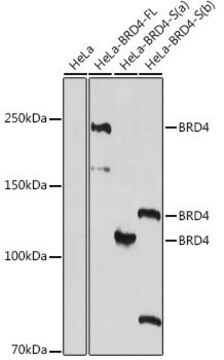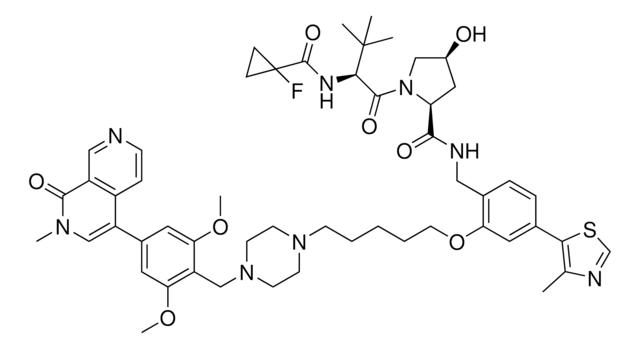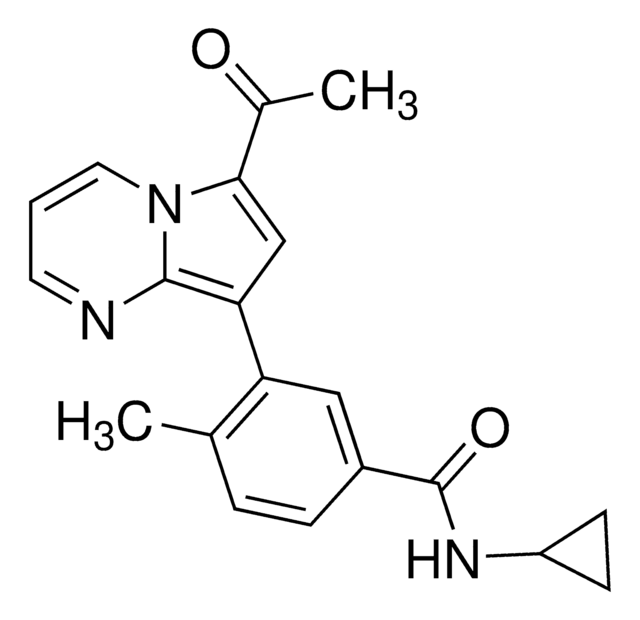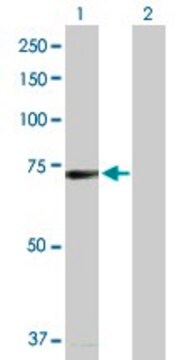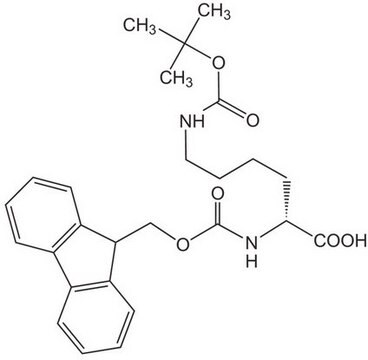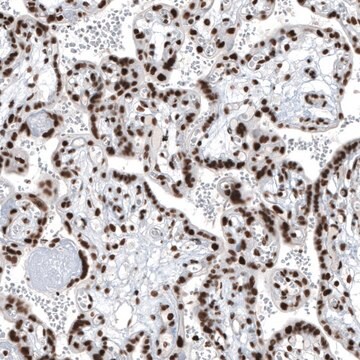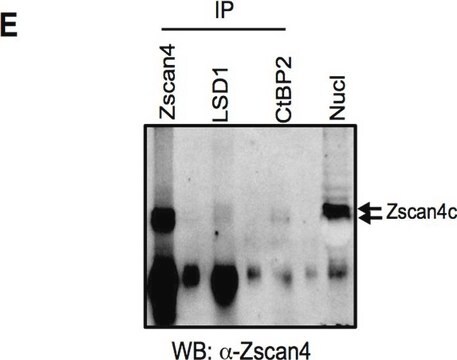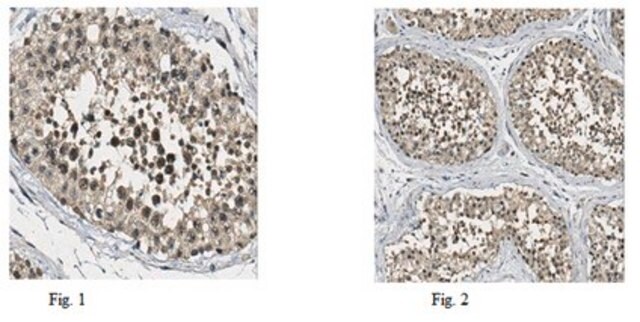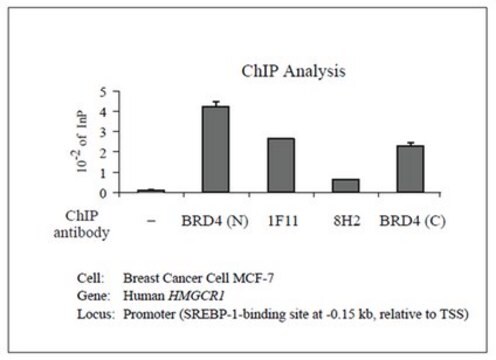ABE1391
Anti-Brd4 Antibody
serum, from rabbit
Synonim(y):
Bromodomain-containing protein 4, Mitotic chromosome-associated protein, MCAP, Brd4
About This Item
ICC
WB
immunocytochemistry: suitable
western blot: suitable
Polecane produkty
pochodzenie biologiczne
rabbit
Poziom jakości
forma przeciwciała
serum
rodzaj przeciwciała
primary antibodies
klon
polyclonal
reaktywność gatunkowa
human
reaktywność gatunkowa (przewidywana na podstawie homologii)
mouse
metody
ChIP: suitable
immunocytochemistry: suitable
western blot: suitable
numer dostępu NCBI
numer dostępu UniProt
Warunki transportu
dry ice
docelowa modyfikacja potranslacyjna
unmodified
informacje o genach
mouse ... Brd4(57261)
Opis ogólny
Specyficzność
Immunogen
Zastosowanie
Epigenetics & Nuclear Function
Epigenetics & Nuclear Function
Chromatin Biology
Histones
Chromatin Immunoprecipitation (ChIP): A representative lot of this antibody was reported to work in ChIP using chromatin from NIH3T3 cells. See Mochizuki, K., et al. (2008) and Anup, D., et al. (2009).
Immunocytochemistry: A representative lot of this antibody was reported to work in ICC. See Anup, D., et al. (2000) and Anup, D., et al. (2009).
Jakość
Western Blotting Analysis: 1:1,000 dilution of this antibody detected Brd4 in 10 µg of HEK293 cell lysate.
Opis wartości docelowych
This antibody primarily detects 100 kd short form of Brd4 and to lesser extent larger 180 kD form (see Alsarraj J., et al. (2013 for additional details on performance of this antibody).
Postać fizyczna
Przechowywanie i stabilność
Handling Recommendations: Upon receipt and prior to removing the cap, centrifuge the vial and gently mix the solution. Aliquot into microcentrifuge tubes and store at -20°C. Avoid repeated freeze/thaw cycles, which may damage IgG and affect product performance.
Inne uwagi
Oświadczenie o zrzeczeniu się odpowiedzialności
Nie możesz znaleźć właściwego produktu?
Wypróbuj nasz Narzędzie selektora produktów.
polecane
Kod klasy składowania
10 - Combustible liquids
Klasa zagrożenia wodnego (WGK)
WGK 1
Certyfikaty analizy (CoA)
Poszukaj Certyfikaty analizy (CoA), wpisując numer partii/serii produktów. Numery serii i partii można znaleźć na etykiecie produktu po słowach „seria” lub „partia”.
Masz już ten produkt?
Dokumenty związane z niedawno zakupionymi produktami zostały zamieszczone w Bibliotece dokumentów.
Nasz zespół naukowców ma doświadczenie we wszystkich obszarach badań, w tym w naukach przyrodniczych, materiałoznawstwie, syntezie chemicznej, chromatografii, analityce i wielu innych dziedzinach.
Skontaktuj się z zespołem ds. pomocy technicznej